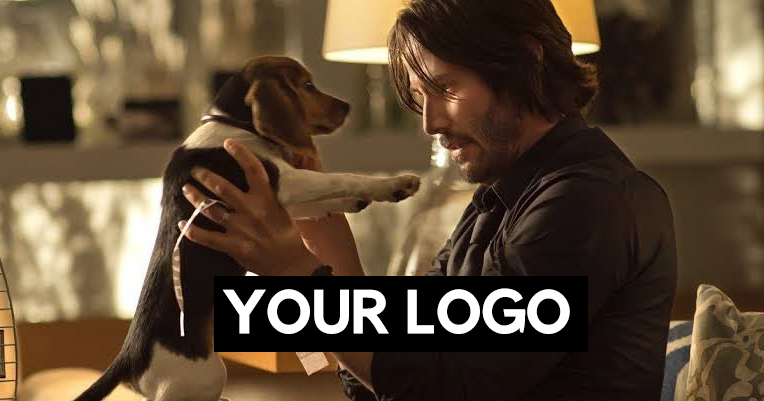Legacy Content Warning
This section of our website is no longer maintained and may not be accurate or reflect our current ideology. Please report any content you believe to be inaccurate to [email protected].
Blog
How To Give Better Design Feedback
Whether you are a design leader or a client who wants to improve the output presented to you, no amount of experience makes it easier to give feedback to your designer.
Florence Alcantara
Dec 11, 2019
Providing feedback to a designer can be quite uncomfortable. If you don’t feel the discomfort, your designer is probably feeling it for the both of you.

You may already know that constructive feedback about both their designs and their work behaviours is an essential part of the process. If you don’t—Oh my God, what have you been doing all this time?
Riddles Are Not a Part of the Design Process
Sure, getting feedback is part of a designer’s job. Whether you are working with a web design agency in Sydney or a freelance designer—that’s how the process goes. The designer gets briefed about the project, they create something, show it to people, they get feedback, and they apply revisions until the output is approved. However, some feedback does not really help them. Like, what does it mean when people say “make it pop”? Are you giving feedback the right way, or are you confusing your designers?
How to Make Your Designer Secretly Hate You
Here are ways of how NOT to give feedback to your designer:
1. Giving vague comments
Maybe you think that you’re clever when you tell your designer to “make it pop”. Because “Yasss, that makes sense!”. No. Just stop right there. It does not mean anything. That is like going to the doctor saying “make me feel better” without giving any other information. Vague comments or gut reactions do not give your designer enough details to move forward.

When you tell your designer “I just don’t like it”, “It looks weird”, or “Make it better”, these all means nothing to them. There must be a myth somewhere saying that designers can read your mind but, surprise! Contrary to popular belief, a designer cannot read your mind, and that is not a skill that they can learn either.
2. Asking for the impossible
It is a designer’s job to make your creative vision come to life. Do you know what is not part of their job description? Breaking the rules of logic and physics. They may say that art has no limits, but the rules of design say otherwise. Design is a form of art, but it follows some principles to ensure that it is good design.
You cannot force some colours together, and you cannot draw a duck-shaped circle. You also cannot tell your designer to draw a unicorn without a horn, and then shoot them down when they point out that it’s just a horse. Please, PLEASE know that you cannot ask for a minimalistic site “like Neil Patel’s home page” then flip out when the designer did not put an image of a unicorn without a horn, a rainbow, a bevelled button to Mars, all the numbers of Pi and a tree. Also, your vector horse cannot be both realistic and minimalistic.

Designers have no issues with applying a lot of revisions for you. If they have been working for a web design agency in Sydney or anywhere else, they know that corrections are necessary to perfect a design. But you should know that there is a big difference between making them do a lot and making them do the impossible.
3. Being confusing
Descriptive and flowery words may work for the creative brief or when providing inspiration, but not when you are giving feedback. Your designer does not need to hear poetry while trying to figure out what you want.
Client: Your design is elegant and professional, my dear,
But I need it to be happier and friendlier, I fear,
I need it to feel like a stroll in a magical meadow—-
Your Designer: Dude, I just need to know if you want the logo in grey or yellow.
Being confusing is almost as bad as being vague. And it’s only almost as bad because usually, you know what you want, you just aren’t able to express it accurately. During the feedback stage, you need to be precise. Your flowery words may mean one thing to you and another to your designer. In the example above, the client wants a friendlier logo—”friendly” can mean orange to you but yellow to your designer. Or maybe the colour is fine, you just want the logo to be rounder, but your designer thinks that the colour is the issue.

4. Setting unrealistic expectations
This is similar to feedback mistake #2 but worse. This is not even about requesting the impossible, it is expecting the impossible. Designers can create pretty incredible things. However, your designer has limitations. For example, you cannot expect that your designer can turn the elephant around in image that you sent them. Or they can’t “Photoshop” your house away so that they can see the car parked behind it. It is unrealistic to ask your designer to make a logo that tells a thousand stories.
Designers like a good challenge, but expecting that they can do the impossible will just disappoint you and frustrate your designer.

5. Being nitpicky
Okay, you want the design to be perfect. You know that you are not supposed to be vague and confusing. So, it’s okay if you list super specific revisions which go down to the last pixel, right? WRONG. Your nitpicky and detailed feedback can block the creative process too. If you micromanage every little thing, then you are giving creativity no room to breathe. Instead of being able to “bring your design to life”, your designer becomes a fancy mouse-clicker.

6. Being indecisive
The creative brief exists for a reason. You have a creative vision and goal. Your designer will work with the information that you have provided them towards the end result that you want. Now, you need to know that revisions are standard and you can request changes if you feel like the design is straying further from your goal. However, there is a difference between asking for changes because the design is different from your vision and not knowing what you want.
If you think that your designer does not notice that you are indecisive, you are terribly mistaken. The moment you approve a logo and then had it changed three times—they know. And you are just confirming their suspicion when your very orange website is finally finished, but now you are asking if they can make it yellow. Your indecisiveness can drag the process longer than it needs to be.
How to Be a Decent Human Being—to Your Designer
Here is how to give better feedback to your designer:
1. Be specific
Be specific with what you want to happen. Describe what you are looking for. Help your designer understand what you don’t like. Is it a layout issue? Are the fonts weird? Are the colours too muted? WHAT IS IT?
Instead of simply saying “make it pop”, work your brain cells and say “I need the text under the logo to stand out more, can you try changing the font and its colour?” If you can’t put your thoughts into words, then no one is stopping you from providing a visual example. Look for a design or a layout that “pops” for you. Then, tell your designer that’s what you want.
When you go to the doctor, you tell them exactly where it hurts. So when you go to a designer from a web design agency in Sydney, please, do the same thing. Figure out what your gut does not like or what you think is weird and communicate it to your designer.
2. Ask questions and listen to the answers.
Designers do not bite (unless you starve them by paying with exposure), so do not hesitate to ask questions. Designers will let you know when your creative vision is not practical, but they will help you find a better solution. You can ask them questions if you are not sure about some of your requests. You can also ask them why your request is not possible. Properly communicating can help you and designer collaborate into making something amazing.
3. Say what you mean—no flowery words.
Think of the most straightforward and most specific way of saying your feedback. What does a “friendlier” logo mean to you? Do you want the thing to be yellow or do you want it to be round? Do you want it to have a vector of John Wick hugging his dog with your logo? Should John Wick be yellow? WHAT DO YOU WANT? If you are not specific enough, your designer will decide for you.

4. Understand boundaries
Designers can do a lot of things, but you cannot expect them to be able to do the impossible. Feel free to give them a bit of a challenge, but make sure that your goals are realistic. Your requirements should be clear, simple and achievable. You can ask other people if your feedback makes sense.
5. Have some faith in your designer
They went to school to learn design, they made it into a web design agency in Sydney, and they have worked on other projects before. You hired them to do a job. If you are going to hold their hand the whole process and make them a glorified mouse-clicker, you might as well just do the job yourself. Communicate your idea to your designer and ask questions if needed, but leave the process and the details to them. If you direct every single move they make, how are you going to know if there are better ways than the one you know?
6. Know what you want
Your designer will follow your decision for as long as it is realistic and achievable. However, is a design really feasible when you don’t even know what you want it to look like? You cannot give specific feedback when you are indecisive. Being spontaneous may work for some other things, but not in design. Would you really prefer spending an extra few days or months working on revisions with your designer instead of making a decision that will take much less time?
Being decisive is something that does not just benefit your designer, it also helps you. The sooner the design is done, the sooner you can use it to do your thing and the more money you can save.
Conclusion
As a rule of thumb, do not give feedback to designers the way you don’t want your mum to talk to you. Imagine this:
Your Mum (while looking at you): I just don’t like it.
You: What did I do, mum?
Your Mum: It’s…just weird.
You: …
Your Mum: Just make it better.

The bottomline here is that communication is key. If you have questions, you ask them. If you don’t like something, tell your designer EXACTLY what you don’t like, but not to the point that you have converted them to a glorified mouse-clicker.